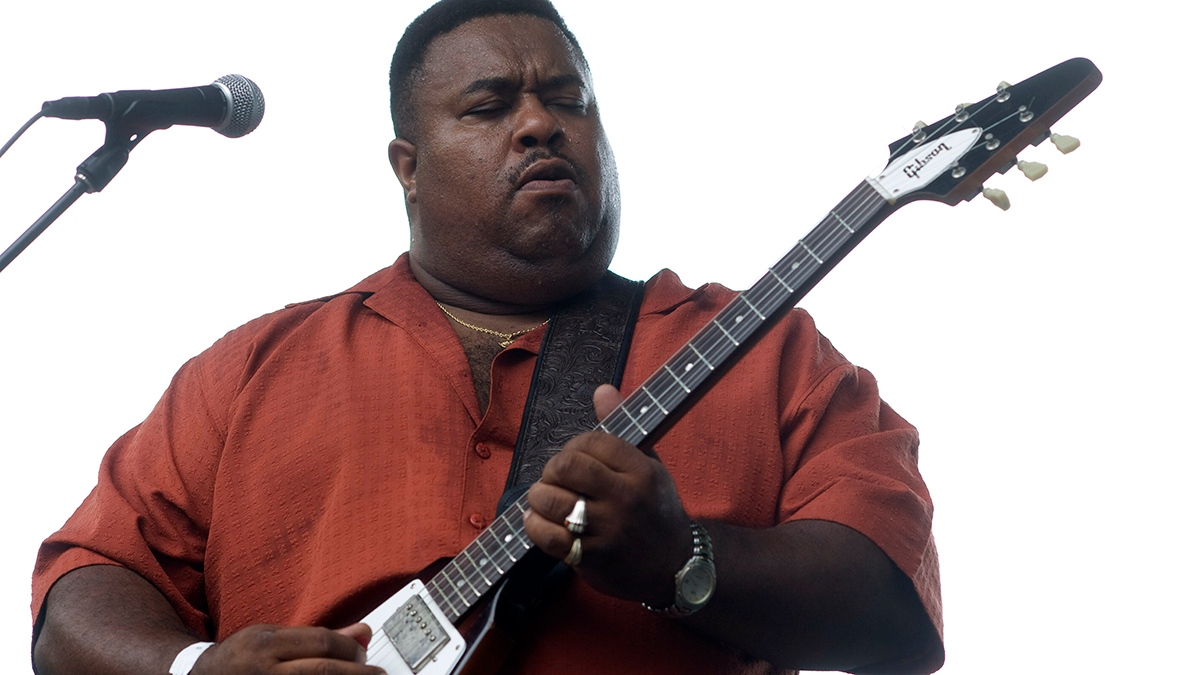“I became obsessed with the idea and decided to reach out. I framed it like: ‘Would you be open to this if I worked on a prototype?’” How two of the pedal world’s most groundbreaking firms joined forces to make the ultimate overdrive
Combining two of the finest circuits in the game on one feature-packed gain pedal, the Brothers AM is the one overdrive to rule them all. Analog Man’s Mike Piera and Chase Bliss’ Joel Korte explain how it came to be
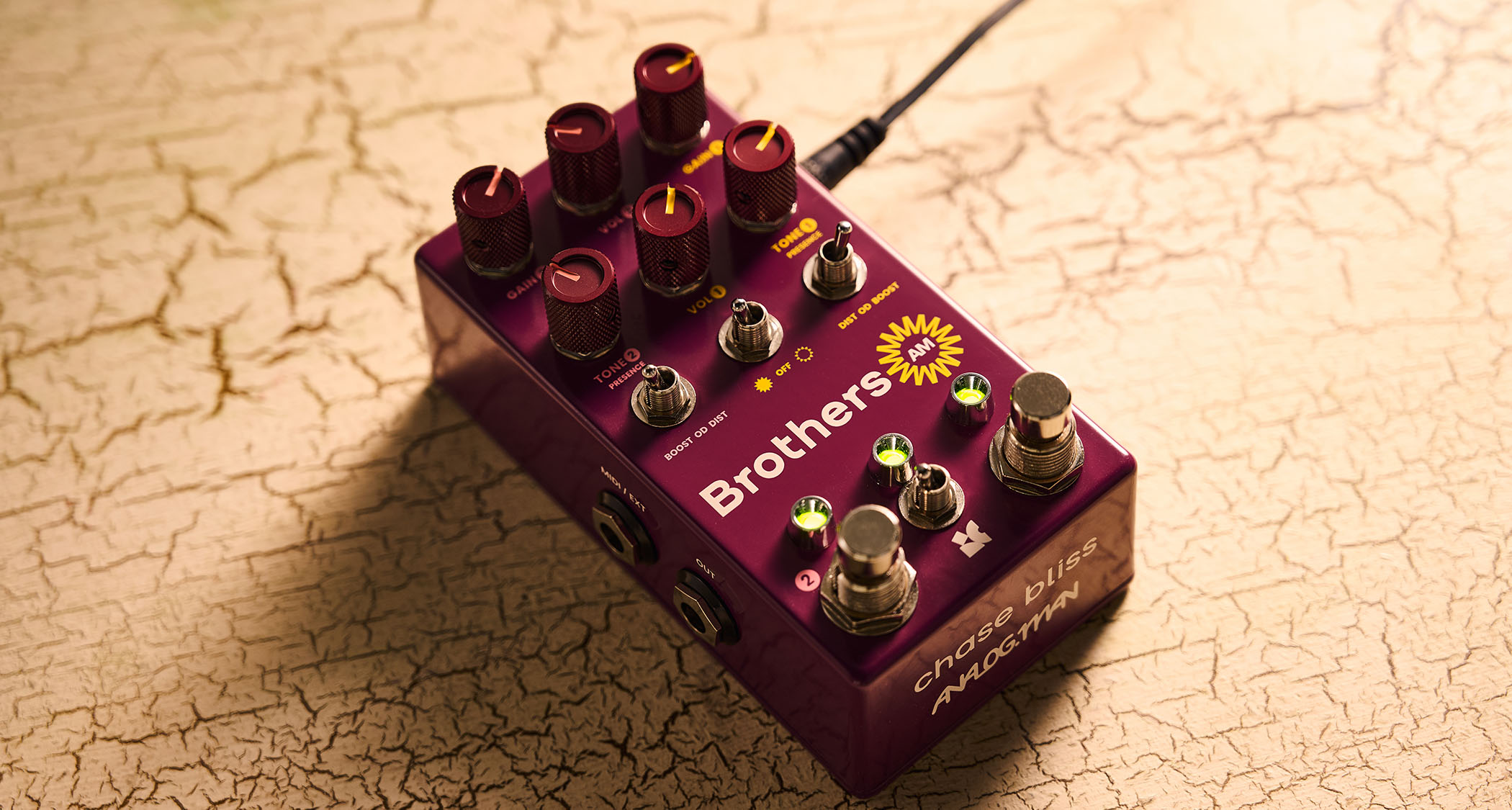
When you think of AnalogMan and Chase Bliss, two of the finest independent pedal makers in the game today, the first thing that springs to mind probably isn’t journeys to Asia to source New Old Stock.
But that’s just what happened when AnalogMan’s Mike Piera and Chase Bliss’s Joel Korte got together to build their ultimate gain-inducing stompbox, the delightfully amp-soaking Brothers AM, which launched this year and, thus far, seems to be one of the most sought-after overdrive pedalboard solutions this side of the iconic Ibanez TS9 Tube Screamer.
The Brothers AM pedal takes elements of the classic AnalogMan King Of Tone overdrive and blends its circuitry with the best bits of Chase Bliss’s Brothers analogue gain stage pedal.
With a heritage like that, the Brothers AM was born to be a hit. As for Piera, a man – and guitarist – who knows a thing or two about stacking one’s gain stages, he shrugs when asked if he and Korte have crafted a near-perfect pedal.
“Steve Hackett from Genesis gave us a great quote for our vintage effects guide,” he tells Guitarist. “Steve told us: ‘There is no such thing as a useless effects pedal; you just need to find how to apply it.’ But I think the opposite is also true. There is no perfect pedal because they can be used poorly.”
Piera goes on to explain that while the Brothers AM is a valuable tool, it’s not for everyone. “A beginner player, playing softly in their bedroom with a solid-state amplifier, probably doesn’t need the Brothers AM or a King Of Tone,” he says. “Though a Duke Of Tone or a Prince Of Tone could come in handy!”
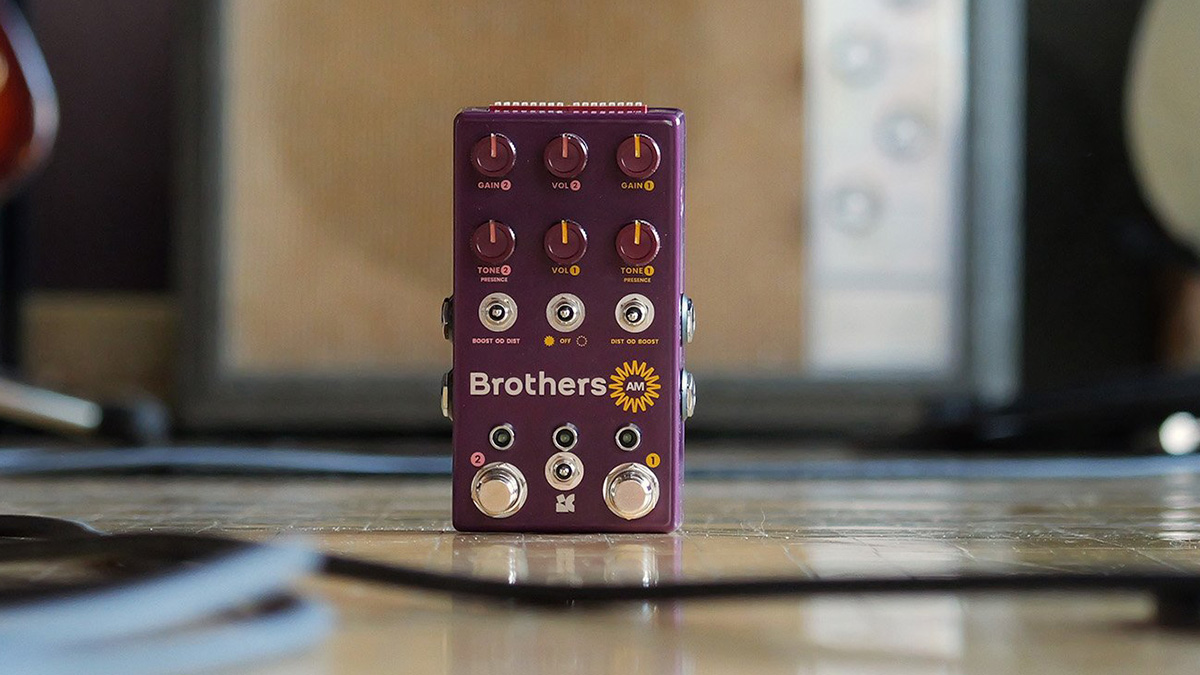
How did this AnalogMan/Chass Bliss collaboration come about? And what did you envisage that the King Of Tone circuitry could bring to the previous Brothers iteration?
All the latest guitar news, interviews, lessons, reviews, deals and more, direct to your inbox!
“It came about after [Chase Bliss founder] Joel [Korte] emailed me in early 2020 about a possible collaboration. He said that he was going to discontinue his current Brothers [analogue gain stage] pedal, and thought the King Of Tone circuit would be perfect for that layout.”
And why was that?
“Because it has two separate pedals, each with full external control, presets and MIDI control. Our pedals – except for our Amaze1 delay controller – are all analogue, so they cannot store presets or talk to MIDI equipment directly.
“At the time, I was also working with Dunlop on the MXR Duke Of Tone, which was a smaller, cheaper version of our circuit. The Chase Bliss [iteration] would be a more powerful version, with more features, but mass-produced. This meant that it would not cost significantly more than a King Of Tone with many options.”
Once you agreed, what were your hopes for the project?
Joel was not happy with some aspects of the existing Brothers pedal. He was intrigued with the King Of Tone circuit and how it could work with their layout and features
Mike Piera
“My aim with both the Duke Of Tone and the Brothers AM was to get our pedals in the hands of more players, who could try them at guitar stores all over the world. We don’t advertise or even pay for website placement, as I prefer people to find our pedals themselves or through friends, or especially from professionals who use them.
“Joel was not happy with some aspects of the existing Brothers pedal. He was intrigued with the King Of Tone circuit and how it could work with their layout and features. The King Of Tone has three basic settings – Clean Boost, OD and Distortion – all of which have the same basic volume, tone and drive controls.
“They stack very well. I think that most people, like me, like to run the boost after the overdrive for a thickening and volume boost, while others like to run the boost into the overdrive to add more distortion without too much additional volume. This allows many tones and levels of distortion as you can stack any mode into any other mode.”
Once you and Joel got rolling, how did the partnership pan out? Who did what?
“Joel and his crew did all the heavy lifting, as they had their architecture and digital voodoo, and I provided our circuit to integrate. They brought prototypes to me to try and we tested them in Madison Square Basement with my setup, which I have been playing for a long time, against my personal King Of Tone, which I built about 20 years ago.”
The Brothers AM was five years in the making. What technical challenges did you encounter during that time?
“From the first prototype, I was confident that the tone and feel were there. They had to make many choices to try to get the sound they were looking for: they could not use the exact parts we used for several reasons, like availability, SMT versus through hole, and so on.”
You took a trip to Tokyo, Japan, where you ventured to source vintage parts. Joel is quoted as saying: “Rummaging through the same bins 40 years later, I found a part that would solve our final and biggest challenge on Brothers AM.” Tell us more!
“The second time Joel visited our shop, he was fidgeting and finally asked me a serious question: ‘What is the best pedal to pair with the King Of Tone?’ I immediately replied: ‘Our Beano Boost – the Rangemaster/treble boost into the King Of Tone is my favourite sound. It’s thick and crunchy with lots of harmonic content that mates perfectly with a band.’
“Joel was extremely happy to hear that as he was thinking of adding a Rangemaster Treble Booster-type circuit to the Brothers AM pedal. I knew it would make the pedal really special, and I was all for it.
“But our Beano Boost uses old germanium transistors that are temperature-sensitive. And the circuit needs to be tweaked for each individual transistor, so it was not a good idea for a mass-produced pedal.”
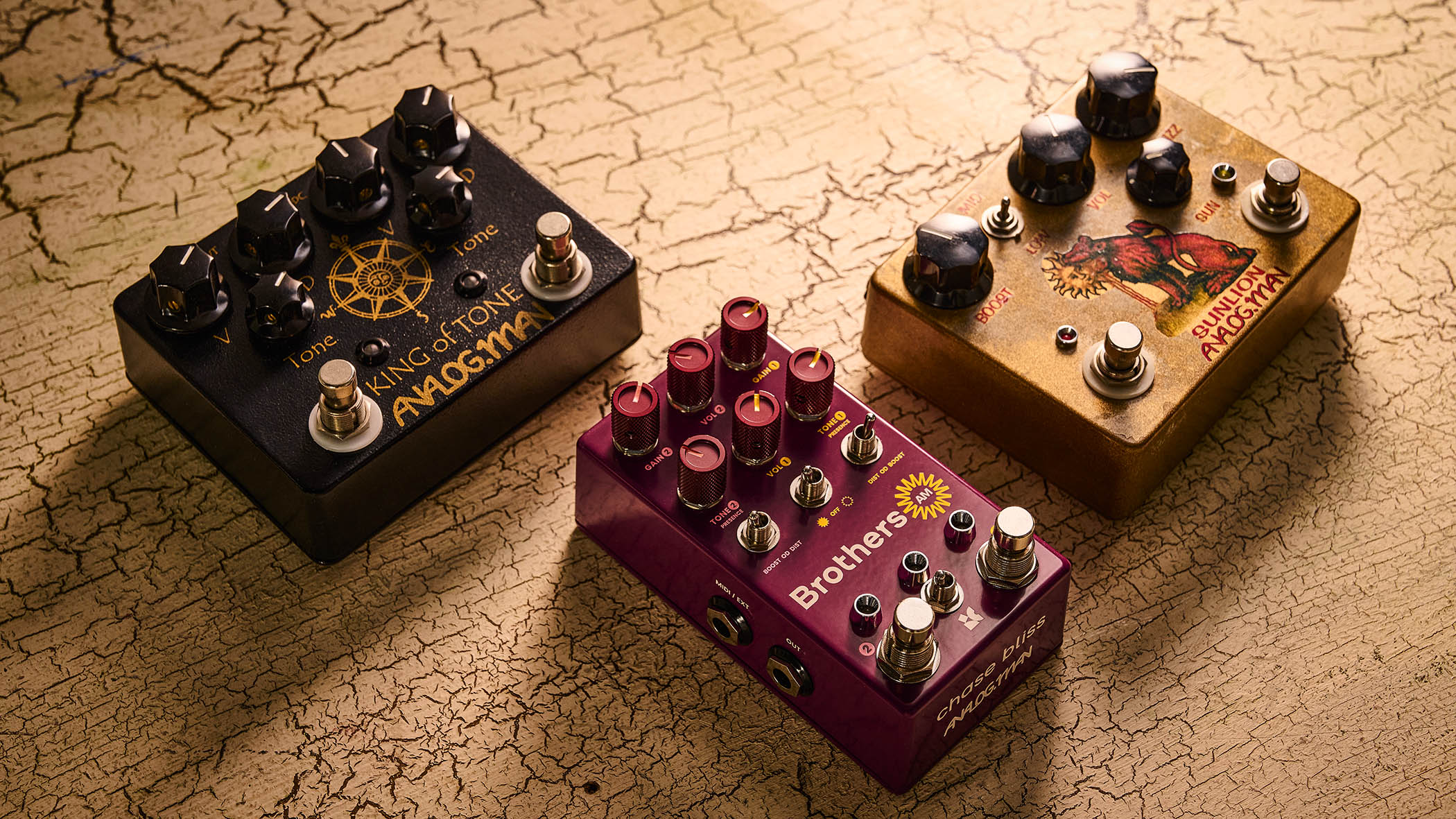
Are those the components you found while in Japan?
“When we were in the vintage surplus shop in Akihabara, we found a bin of transistors that looked germanium, in a big metal can, but we Googled and found that they were low-gain silicon, which could be great in this circuit, so Joel took some home.
“And although he may not have used that exact part, it allowed him to find an awesome-sounding transistor that is also in the big metal can, so he made room on the circuit board for it. It’s activated by a toggle switch, which adds it to one side and can also be saved to any preset. One of the factory presets is ‘Mike’s Sound’, which is my favourite King Of Tone setting and makes it easy to use.”
Now that you’ve lived with the Brothers AM pedal for a bit, how do you feel about the final version?
“[Chase Bliss] were not aiming to get the exact same sound but the best sounds for the pedal in its configuration, with the familiar tone and feel of our Bluesbreaker-derived King Of Tone circuit.
“The digital part must have been very challenging also, as it’s easy to get weird noises and glitches when switching elements of the circuit. Also, getting the digital potentiometers to react like our analogue ones is not easy. And so far, from many players’ feedback, they did a great job!”
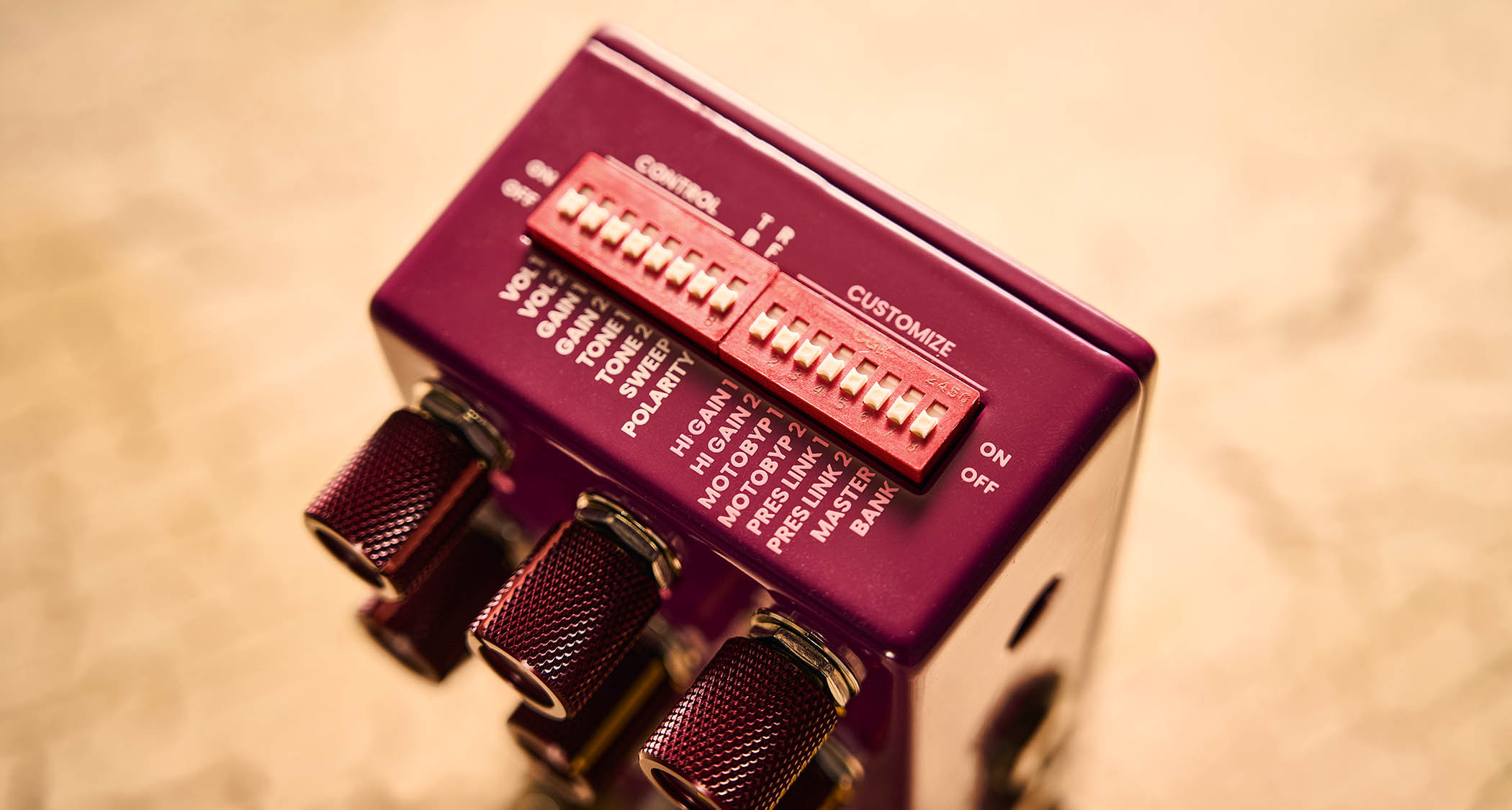
What do you think the new Brothers AM pedal will bring to guitar players’ respective tones?
“These are a great tool as two circuits can give any amplifier four channels. For example, on my settings I have clean – both off – boosted, overdriven, or boosted overdrive, with both on. These sounds will preserve the sound of your guitar and amp; they just add levels of drive and compression.
“But it depends on mode and drive knob setting, and focus, reducing flubby low-end and messing with the bass or bass drum, which you have with some pedals. Also, adding the treble boost can turn a Fender amp somewhat into a Marshall [sounding amp].”
How would you say that the Brothers AM compares to others like it on the market, if there even is anything quite like it on the market?
“There are several King Of Tone-inspired pedals on the market from various manufacturers. But other than the cheap Chinese counterfeits, none of have them have the features of the three settings, and treble trim pot, plus the actual King Of Tone circuit. What really separates this pedal from any others is the Chase Bliss digital control addition, especially the Beano boost.”

Is there a guitar, amp or even genre that you feel the Brothers AM pedal works best with?
“I originally designed it with a [black-panel] Deluxe Reverb, but I have since tried it with many of my other amplifiers – and it really loves the Vox AC15. I just got one of the Jimmy Page Sundragon amplifiers, too, which is a modified Marshall. Though it’s an amazing amplifier, I think it sounds better with the King Of Tone.
“Most of the Nashville session players are using a King Of Tone for country music and, of course, the blues artists use it a lot, too. It’s also found in heavier rock, such as Dream Theater, Porcupine Tree and so on. I think jam bands may be some of the heaviest users.
“I think it works well with a wide range of other gear and genres because it doesn’t do too much – it just adds some overdrive while preserving your other gear’s tone.”
This collaboration is a celebration of two great independent pedal makers, which is a feat in and of itself. To that end, what are the biggest challenges in the pedal-making game today?
Every week, I get a few emails from people asking if the ‘King Of Tone’ pedal that they just bought is from us or if it’s just a reproduction. Unfortunately, many of them are fakes
“It has been nearly impossible to continue making the pedals we make without spending an inordinate amount of time on locating components. We still try to use a lot of New Old Stock components, but even the new capacitors we buy keep getting discontinued and we’re struggling to find suitable replacements.
“Also, the counterfeits are coming in strong, though I can get them taken off of eBay in a day or two. But it takes a lot of my time checking it and reporting the trademark infringement. And there’s no way to stop the Chinese markets from selling counterfeits and shipping them into this country.
“The United States Border Control has our information and is supposed to be confiscating any pedals coming in from China with our trademarks. Still, every week, I get a few emails from people asking if the ‘King Of Tone’ pedal that they just bought is from us or if it’s just a reproduction. Unfortunately, many of them are fakes.”
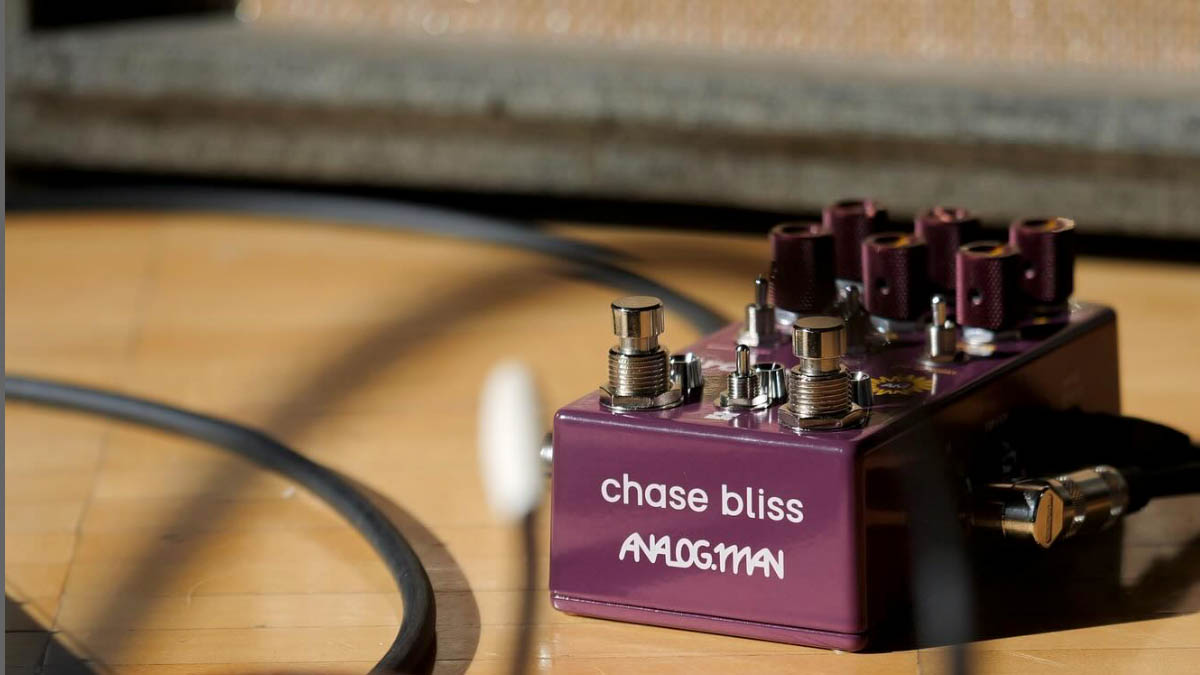
Do you have further collaborations planned with Joel or other notable effects makers?
“I enjoyed this collaboration, not just for the pedal work but even more for the social aspect of meeting and working with new people and going to new places. The crew and associates at Chase Bliss could not have been more fun and relaxing.
“I also enjoyed working with Dunlop on the Duke Of Tone and would be open to future collaborations. I am currently working on a special short-run pedal for an amp builder who needs to make a pedal for the brand – I hope it will be out this year.”
Chase Bliss’s Joel Korte shares more on the AnalogMan collaboration
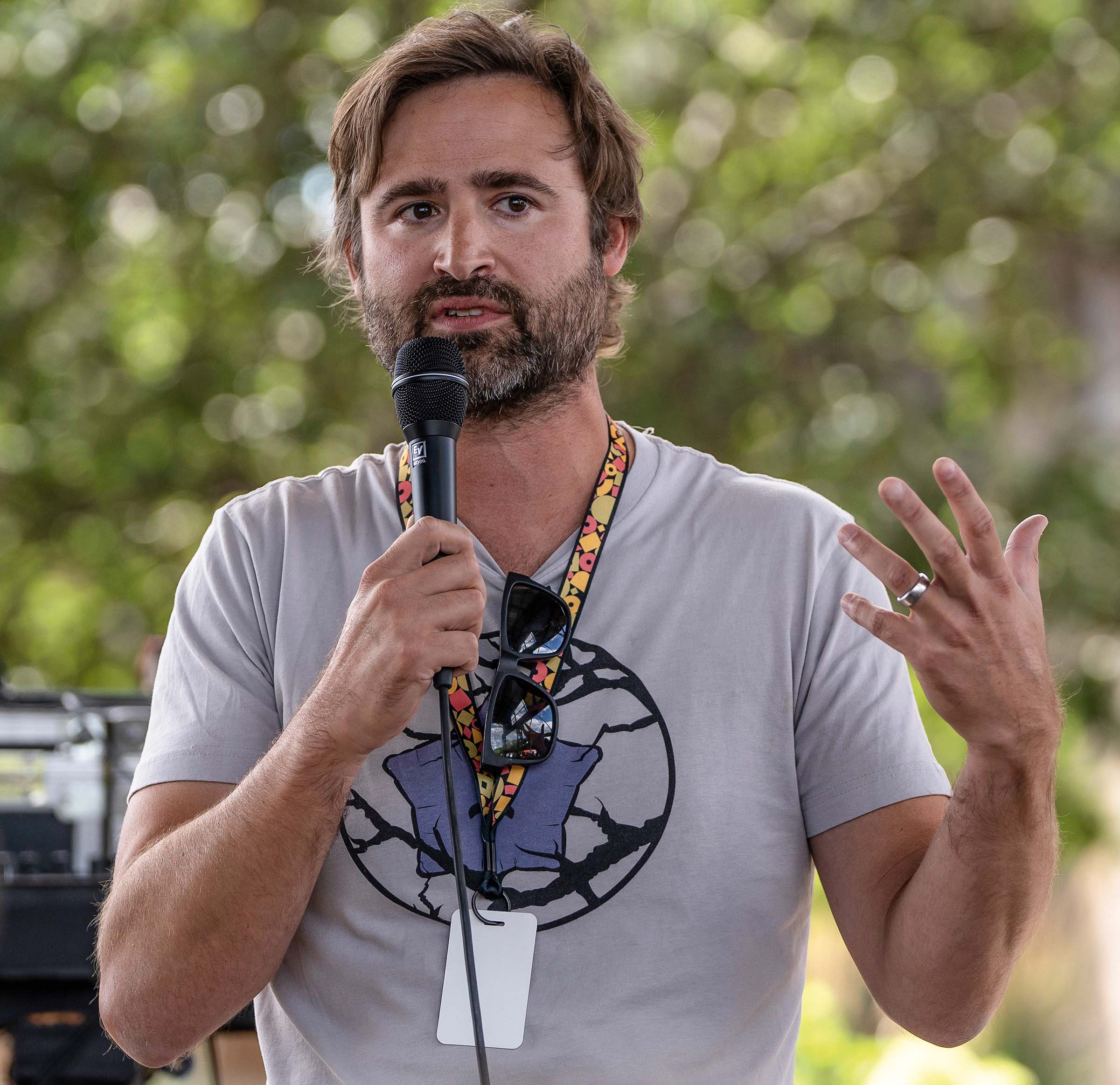
What did you want to improve upon from the original Brothers design?
“The original Brothers pedal has always been a polarising device. Some people love it and absolutely swear by it, while others feel the opposite. The circuits in there are pretty unique, and they also have a bigger bass response than most overdrives and fuzzes out there.
“When we discontinued Brothers, it always haunted me. I really felt like the UI and workflow were great; it was just that people didn’t gel with the circuits as much as I hoped.”
How did the King of Tone become the missing puzzle piece?
“I started thinking of revisiting the concept around the same time I first played a King Of Tone. I loved it right away and immediately saw how well it would map onto the original Brothers UI while also adding a few things.
“I became obsessed with the idea and decided to reach out to Mike. I framed it like: ‘Would you be open to this if I worked on a prototype?’ That was over five years ago. It’s been quite the journey.”
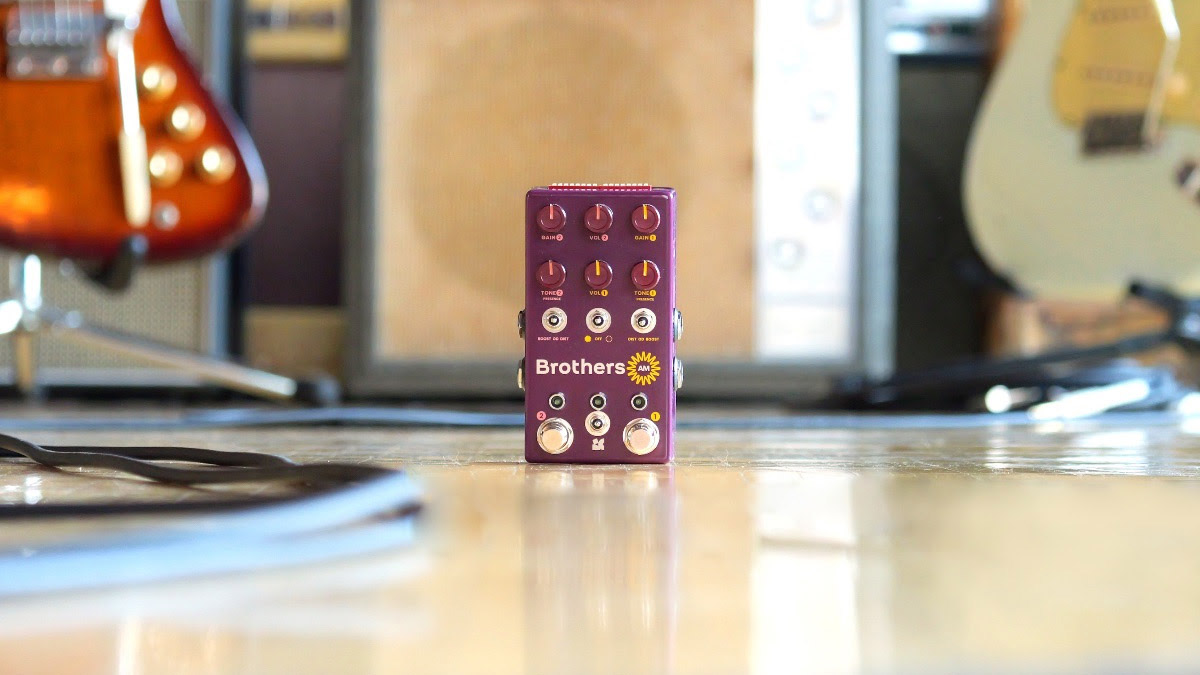
What technical challenges did the Chase Bliss team need to overcome?
“Controlling analogue circuits via digital [means] is always a challenge, particularly when there’s a lot of gain staging involved. For this project, we used digital pots, which was a first for us. In the past, we’d typically control our analogue circuits optically.
“One of the bigger challenges of the project came later on when we added the Beano-style boost. For reasons related to difficulties in sourcing and ambient heat considerations inside the pedal, I wanted to use a silicon transistor as opposed to germanium.”
Did you struggle to find the right components for the project?
“I had a really tough time finding a transistor with the specs that I was looking for. As luck would have it, Mike and I got set down the right path when we were looking for parts in Akihabara, Tokyo.
“This was in the same area where Mike started working on guitar pedals back in the ’80s. We didn’t use the exact transistor we found there, but it made me aware of a family of silicon transistors in old-school TO-18 packages, one of which I found to be absolutely perfect.”
Can you give a rundown of the three circuits onboard the new pedal?
There is an immense amount of tone and texture options in this pedal, so the presets can be really handy
“It’s a Beano-style treble booster into a King Of Tone-style dual overdrive. We wanted to try to create the sound and feel of both of these pedals but use readily available, still in production parts so that we would be able to make a lot of them if the demand was there. The rest of the features really just attempt to give you easy access to all sounds with some additional features.”
How does the Brothers AM mash-up give guitarists advanced control over their tone?
“Like all Chase Bliss pedals, you can save presets. This pedal is no exception since the all-analogue signal patch is digitally controlled. There is an immense amount of tone and texture options in this pedal, so the presets can be really handy. The pedal can also be controlled remotely via MIDI.
“That said, I personally only use one preset for a more aggressive sound, and then I use the pedal in ‘live’ mode, where all the knobs and switches are ‘what you see is what you get’.”
- This article first appeared in Guitarist. Subscribe and save.
- Find out more at Chase Bliss.
Andrew Daly is an iced-coffee-addicted, oddball Telecaster-playing, alfredo pasta-loving journalist from Long Island, NY, who, in addition to being a contributing writer for Guitar World, scribes for Bass Player, Guitar Player, Guitarist, and MusicRadar. Andrew has interviewed favorites like Ace Frehley, Johnny Marr, Vito Bratta, Bruce Kulick, Joe Perry, Brad Whitford, Tom Morello, Rich Robinson, and Paul Stanley, while his all-time favorite (rhythm player), Keith Richards, continues to elude him.
You must confirm your public display name before commenting
Please logout and then login again, you will then be prompted to enter your display name.





